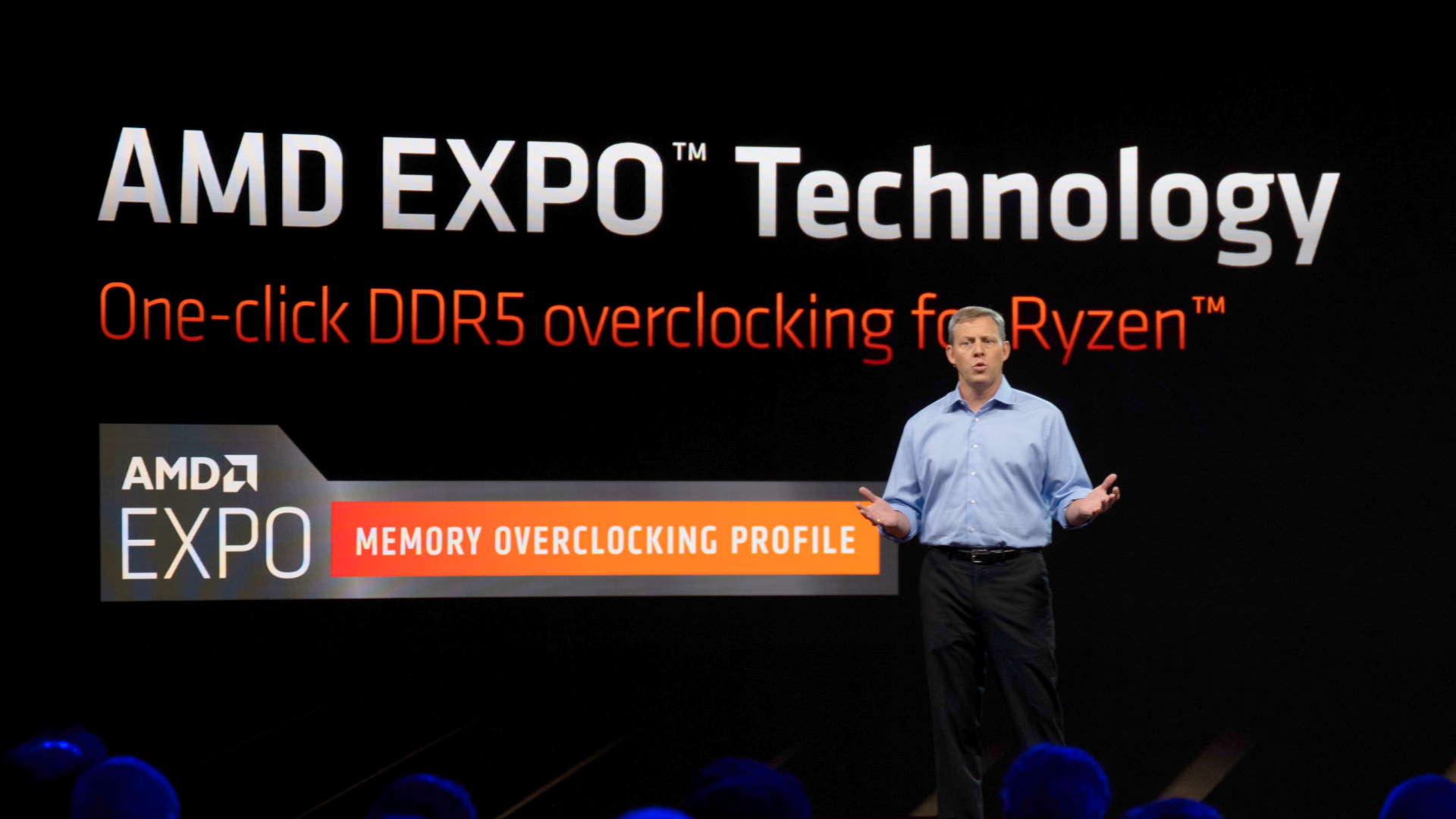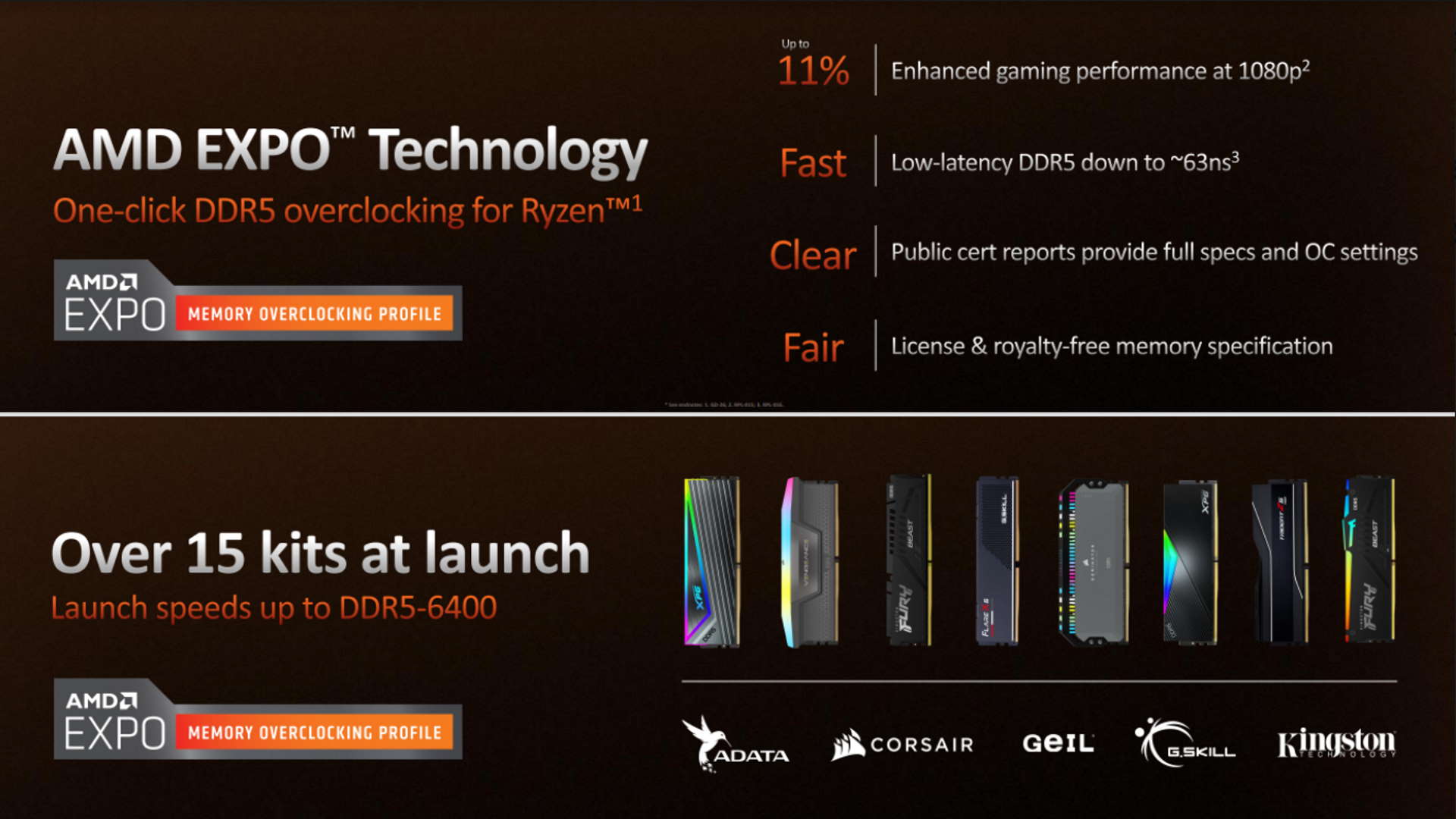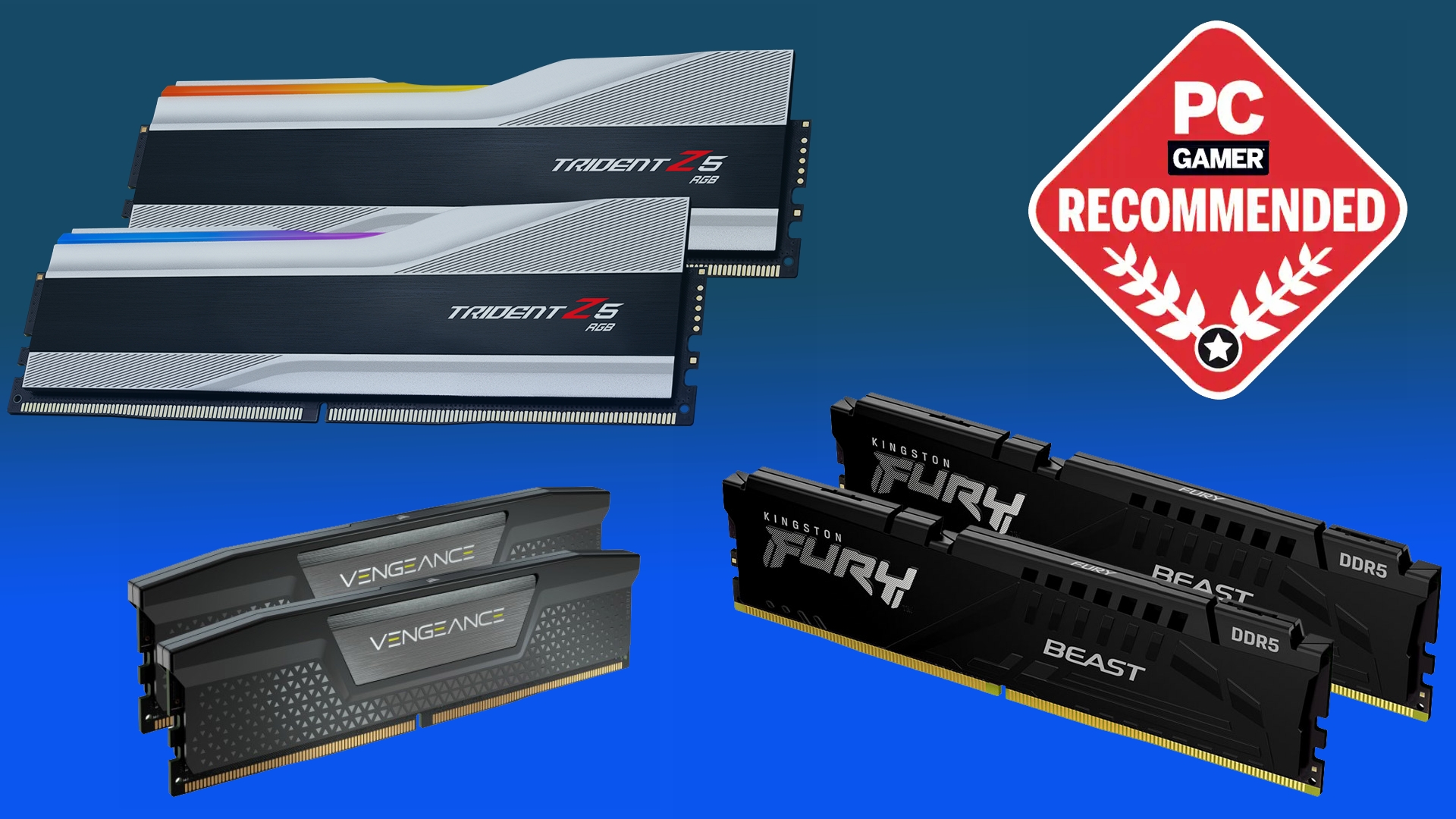AMD predicts DDR5 could hit DDR4 pricing levels by mid-2023
AMD's pushing DDR5 adoption with AM5 and its own open EXPO memory standard, though will still be supporting Intel's XMP.

Since launch, DDR5 has been an incredibly expensive part of the PC building puzzle, but AMD believes we could see pricing drop considerably compared with DDR4 into next year and "potentially cross over as we get into the middle of next year," says David McAfee.
AMD announced its new Ryzen 7000-series processors this week, with a whole new AM5 platform built to support both PCIe 5.0 and DDR5. Like most new technology recently, the new memory kits have either been impossible to find, or are hugely expensive, far more so than the established DDR4 modules.
Intel was the first to offer support for the latest memory standard with its Alder Lake CPUs, but built in backwards compatibility with DDR4 in order to still be able to offer a more affordable way into the platform. That was necessary given the prohibitive pricing, and lack of stock of DDR5 memory modules around Intel's last launch.
AMD, however, isn't giving itself a way out of DDR5 support with its AM5 platform, and is going all-in right from the outset. A year down the line from Intel's Alder Lake launch and that decision's making more sense. For one it means AMD doesn't have to waste resources providing compatibility for an outgoing hardware specification, but also pricing and availability have changed a lot in the past three months or so.
AMD isn't relying on the work Intel has done with its XMP features for DDR5, either. It has been working with memory manufacturers to create a new open standard for overclocking memory profiles, called EXPO.
"It's clear that DDR5 is the right choice today," says McAfee at the Ryzen 7000 announcement event in Austin, "and one that is built for the future as the technology continues to mature over time.
"And we know that Ryzen enthusiasts love to overclock their memory, to ensure they're getting the fastest data rates and the lowest memory latencies to maximise game performance. And that's why the AM5 platform is also being introduced with AMD EXPO technology for extended profiles for overclocking."
The biggest gaming news, reviews and hardware deals
Keep up to date with the most important stories and the best deals, as picked by the PC Gamer team.

At launch there will be around 15 different EXPO kits available that will be completely compatible with the new AMD platform. And if anyone remembers what a nightmare it was getting the original Ryzen to run with different DDR4 memory kits, that will be a welcome start for AM5.
EXPO will allow for one-click overclocking from the JEDEC standard of DDR5-5200 all the way up to DDR5-6400. And AMD is already seeing up to 11% higher gaming frame rates from flipping on that EXPO BIOS switch.
AM5 motherboards will, however, continue to support Intel's own XMP standard in the same way that the long-lived AM4 platform has been.
"We will support out-of-the-box overclocking with XMP memory kits as well," explains McAfee. "I expect it will be a little bit better tuned on EXPO DIMM kits than it is XMP profile kits, but certainly those Expo kits are optimised to work on the AMD AM5 platform."

Best DDR5 RAM: the latest and greatest
Best DDR4 RAM: affordable and fast
But that will count for little if those high-end DDR5 memory kits continue to be so extravagantly priced as they have been.
"What we expect to see even in the remainder of this calendar year," says McAfee, "is more aggressive movement from the memory partners to accelerate pricing declines, get DDR5 pricing closer to DDR4 pricing. And, I think as we go into 2023, we'll see that gap narrow even further, potentially crossover as we get into the middle of next year."
The pricing crossover event will be an important one for DDR5, effectively making it the de facto standard for PC RAM. AMD's prediction of mid-2023 is, however, still going to be a guess, however educated, and the actual timing of this pricing inflection point may well end up being much later into 2023.

Dave has been gaming since the days of Zaxxon and Lady Bug on the Colecovision, and code books for the Commodore Vic 20 (Death Race 2000!). He built his first gaming PC at the tender age of 16, and finally finished bug-fixing the Cyrix-based system around a year later. When he dropped it out of the window. He first started writing for Official PlayStation Magazine and Xbox World many decades ago, then moved onto PC Format full-time, then PC Gamer, TechRadar, and T3 among others. Now he's back, writing about the nightmarish graphics card market, CPUs with more cores than sense, gaming laptops hotter than the sun, and SSDs more capacious than a Cybertruck.

